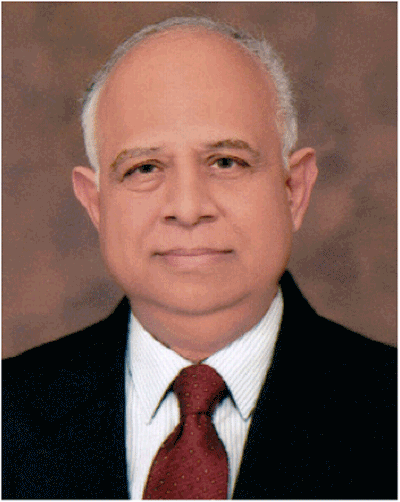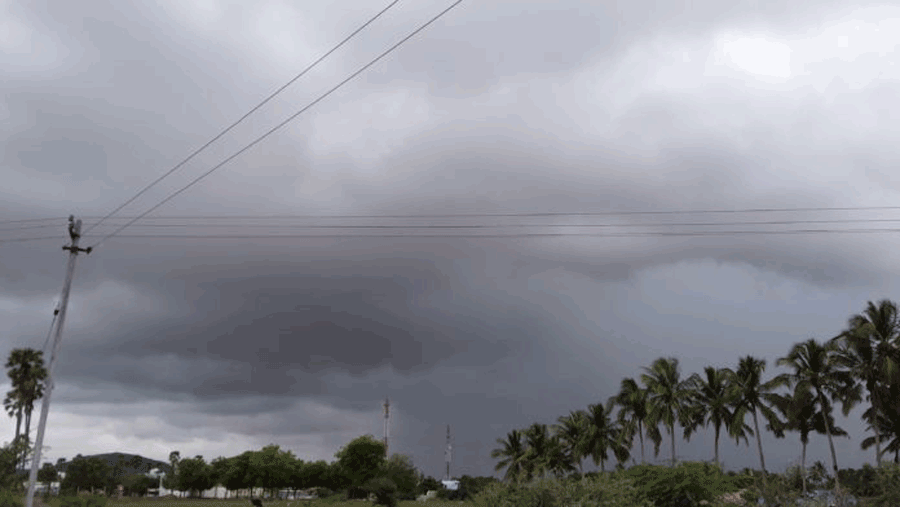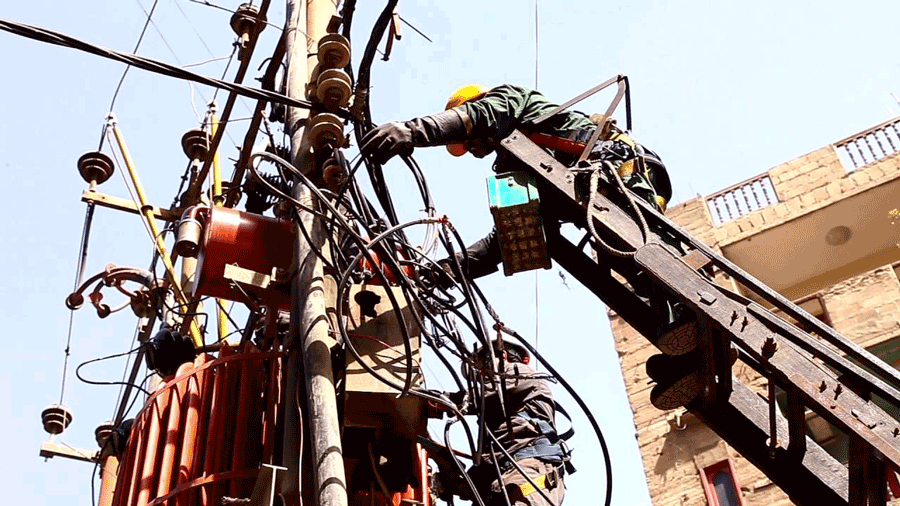Interview: Ikram Sehgal
By Deneb Sumbul | Interview | Published 6 years ago
Over a century old, the Karachi Electric Supply Corporation (KESC), renamed K-Electric (KE), was formed in 1913, when the megacity was still a small town. The government nationalised the company in 1952 in order to facilitate investment in its infrastructure. It was privatised in 2005, the government retaining a stake of 26 per cent, while 71 per cent was transferred to a foreign consortium. In 2009, a new management, led by Abraaj Capital, took charge.
 KE manages all three key areas of producing and delivering energy to consumers – generation, transmission and distribution. With a network spread over 6,500 square kilometres, KE supplies power to over 2.5 million customers in residential, commercial, industrial and agricultural areas – across Karachi, Dhabeji and Gharo in Sindh, and Uthal, Vinder and Bela in Balochistan. As of 2017, the Abraaj Group and Aljomaih/NIG have a 66.4 per cent stake in KE while the Government of Pakistan retains a shareholding of 24.36 per cent.
KE manages all three key areas of producing and delivering energy to consumers – generation, transmission and distribution. With a network spread over 6,500 square kilometres, KE supplies power to over 2.5 million customers in residential, commercial, industrial and agricultural areas – across Karachi, Dhabeji and Gharo in Sindh, and Uthal, Vinder and Bela in Balochistan. As of 2017, the Abraaj Group and Aljomaih/NIG have a 66.4 per cent stake in KE while the Government of Pakistan retains a shareholding of 24.36 per cent.
In 2017, KE made a profit of Rs 10.4 billion, after investing more than $2.1 billion in infrastructure upgrades over the last nine years. The company has plans to invest $3 billion over the next few years. On January 18, 2019, Ikram Sehgal, the Chairman of Pathfinder Group Pakistan, became the newly elected Chairman. An ex-army man, he has more than 40 years of business experience, having served on many Boards. He is also a media person and an author of several books.
The unusually heavy rains that descended across Sindh last month, including Karachi, recorded an average rainfall of over six inches (158.33mm) and as high as nine inches (200.6mm) in Surjani Town. Inundated roads and streets very nearly brought the metropolis of over 22 million inhabitants to a standstill. Worse than the failing amenities was the alarming number of electrocutions across the city. Newsline spoke to Ikram Sehgal about the state of KE and the facts behind the death of 33 people, electrocuted in the aftermath of the recent downpours.
As the new K-Electric Chairperson, did you inherit unresolved problems?
K-Electric is a private company to an extent – the government has shares and an inordinate amount of voice in it. Previous regimes left behind horrendous problems, not only in terms of the economy, but in the people running semi-government organisations and corporations.
For KE, problems carried over, and then multiplied. Particularly grave was the fact that the National Electric Power Regulatory Authority (NEPRA) had not finalised tariffs for two years. As a result, KE’s internal accounts could not be reconciled. We managed to finalise the 2017 accounts last month, as the tariffs were notified three months ago. The tariffs for 2018 will be finalised in September and for 2019 in December. Naturally any investor interested in KE would want to go through the audited accounts and if the accounts are not finalised, it will face problems.
What major improvements have been made in KE over the last decade?
The Saudi company, Al-Jomaih, and German multinational conglomerate, Siemens, took over, once KE’s privatisation was complete. They ran it for a number of years, but continued to face problems, so they invited a third investor – the Dubai-based Abraaj Group, who bought a 50 per cent stake and management control of the firm. A lot of changes were made in the corporate structure. Presently, KE has a tremendous amount of executive potential in people who came from abroad as well as those from within the ranks.
In terms of production and transmission, older turbines have been revamped to produce more electricity, and new ones added to increase power generation capacity. Outdated transmission lines were dealt with, especially those that did not have right of way. The company started to make sure there was enough transmission to the grid stations. Then came the feeders and so on and so forth. A tremendous amount of money has been spent on KE’s infrastructure, but a lot more is required in terms of time, logistics and money.
Do you think K-Electric will be able to keep up with the demands of Karachi’s burgeoning population?
At normal times, Karachi needs 3,300 megawatts. We can only generate up to 2,700 megawatts and have to import about 550 megawatts from the National Transmission Distribution Company (NTDC), out of which 150 megawatts comes from Jamshoro and the rest from other places, like Hub. Whenever power trips in these places or there is a shortfall, you have to cut the load or shift the power around the city.
Power theft is another major reason for loadshedding, fluctuation and tripping in many areas. And then KE needs to work in coordination with other civic agencies to resolve problems, especially those faced during emergencies. To give you an idea, not a single storm water drain has been put in place since 2010. The Pakistan Peoples’ Party was in power until 2015 and they ran the relevant civic agencies through the bureaucracy. Storm water drains are not KE’s responsibility – they are KMC’s. In 2015, an elected representative took over the KMC but nothing was done between 2015-19 either.
“I agree that the kunda system would not be possible without our own people being involved. I would expect the KE management to do something about it.”
To add to that, garbage collection in Karachi is a non-starter. The mafia does not allow garbage collection because they remove inorganic content from the garbage and make money from selling it. Combine that with the accumulated garbage clogging up whatever drains we have. During the heavy rains, the accumulated rainwater had no place to drain out and so entire streets and localities were flooded.

We had to shut down electricity in several places where water had accumulated. It was a question of either comfort or the lives of the people of the community. They have the right to protest, of course, and one can’t blame them either, because they do not know what is happening in the KE headquarters.
What other factors impact KE?
KE has 3,000,000 customers out of which 700,000 are industrial consumers and 2.3 million residential. There are 300,000 kundas (illegal connections to electric poles) in and around the city. There is a potential of electrocution wherever there is a wire dangling and it is not just a thousand wires dangling – it’s a lot more.
In katchi abadis, private electrical poles are erected that draw their current from KE’s poles. Of course KE does not receive any payment from them because the local mafia acts like a local distribution company and charges Rs 1,500 per household. If you try to go there and stop them, they will kill you.
Beyond the kundas, the most deadly problems are the overhead internet cables. For power, an internet kunda is attached to KE’s electrical poles. The jumble of wires and boxes you normally see on these poles do not belong to KE – they are those of private internet cables. When KE workers were trying to retrieve bodies of the three young men electrocuted in a flooded street in Defence Housing Authority, the workers could not go near them, despite the power supply being down. An internet cable kunda had fallen and the current continued to flow from it in the accumulated water.
Only two of the 33 electrocutions after the recent rains were because of KE, which has been acknowledged. The others were due to various other reasons. We will compensate the two deaths, once we have verification through third party, etc.
I will say this in a perverse way; under the circumstances there could have been 3,000 electricutions, but mercifully there were only 33.
Cable kundas are deathtraps. The internet cable providers don’t allow you to cut their wires – if you do, they will cut your electrical wires. It is totally illegal. It should be as in Islamabad where the internet is connected through optical fibers put in pipes and placed underground. But because this costs money, the laws are flouted.
Then how do you stop the entire system of illegal electricity connections?
The only way to take the kundas off is with the help of the law-enforcement agencies, the Rangers and police. But the very next day, the kundas are up again.
In katchi abadis, recovery is non-existent because they don’t allow us to instal KE meters. You are in a Catch 22 position: heads I win, tails you lose as far as the mafia is concerned.
We can only do something about it if the community and the local bodies get involved. They need to ensure their communities are safeguarded and are not under threat by any mafia.
Are KE’s own employees involved in the kunda system?
I agree that the kunda system would not be possible without our own people being involved. I would expect the KE management to do something about it.
What measures are being taken to prevent future cases of electrocution?
I took up this position when I was asked and nominated by the private shareholders and elected by the stakeholders. In the army, we say that the person at the head of any unit or sub-unit is called Imam and he is responsible. So as head of KE, I must take the responsibility, not my workers, if there have been two deaths. But along with me, the people running civic departments who didn’t make the storm drains, who didn’t collect the garbage are equally responsible and should be held accountable as well.

Kunda culture: The jumble of wires and boxes around electric poles are invariably illegal.
There may have been lapses and they are being investigated. Certainly, the management is going to take action against them. Having said that, it is also a fact that the vast majority of KE’s 10,000 strong staff worked marathon hours during the recent rains, in some places for 72 hours at a stretch. I can’t tell how our workers responded in some of the more sensitive installations and in the face of adversity – it was above and beyond the call of duty. KE workers were under threat of electrocution themselves, in several places working under dangerous conditions. One live wire in the water could have ended their lives as well. Fortunately for us nothing like that happened.
The Shanghai Electric Power Ltd (SEPL) is set to purchase majority shares in K-Electric Ltd. What are your expectations?
I have nothing to do with the sale of the company and know nothing about the negotiations. I am happy I am not involved because I have great reservations on certain matters, but I would not like to comment on it.
How much money is owed to K-Electric by various government bodies and who are the major defaulters?
You will be shocked to hear how much government bodies owe us in non-payment of dues – figures vary between 100 billion and 150 billion rupees. KE also owes money to other organisations. The problem is very simple. The money owed by KE to other government bodies, such as SSGC is about 120 billion rupees, of which 80 billion is in interest. KE is agreeable to pay the interest, provided other government bodies such as KWSB and KMC do the same as well and pay interest on the money owed to KE. But it is a one-way street, they don’t want to pay. The biggest defaulters are the KMC and KWSB. Several other government agencies owe us as well.
Do you feel that the KE’s present complaint system needs improvements?
It has improved over the last 10 years, but needs substantial improvement. I would like an automated complaint system that displays the number of complaints in the sequence they are received. Say a complaint is registered in Clifton, for which there will be a complaint number. The complainant should be able to see it on the website along with the other complaints from Clifton. As the complaints are corrected, the website gets updated.
What are the changes you would like see?
Utility companies are not just energy companies. They are components of national security. Access to energy is one of the foundations in the functioning of a nation, and in the case of Karachi, a strategic asset.
The political stakeholders, the utility companies and the communities need to work together to enable positive outcomes. Communities should help K-Electric by reporting energy theft. Political stakeholders need to create the right policies to support energy goals for the nation, and utility companies need to keep investing, not only in the infrastructure but also in the communities. As a strategic national asset, we are committed to playing our part, and to working with the other two actors for the betterment of the city.
The writer is working with the Newsline as Assistant Editor, she is a documentary filmmaker and activist.


